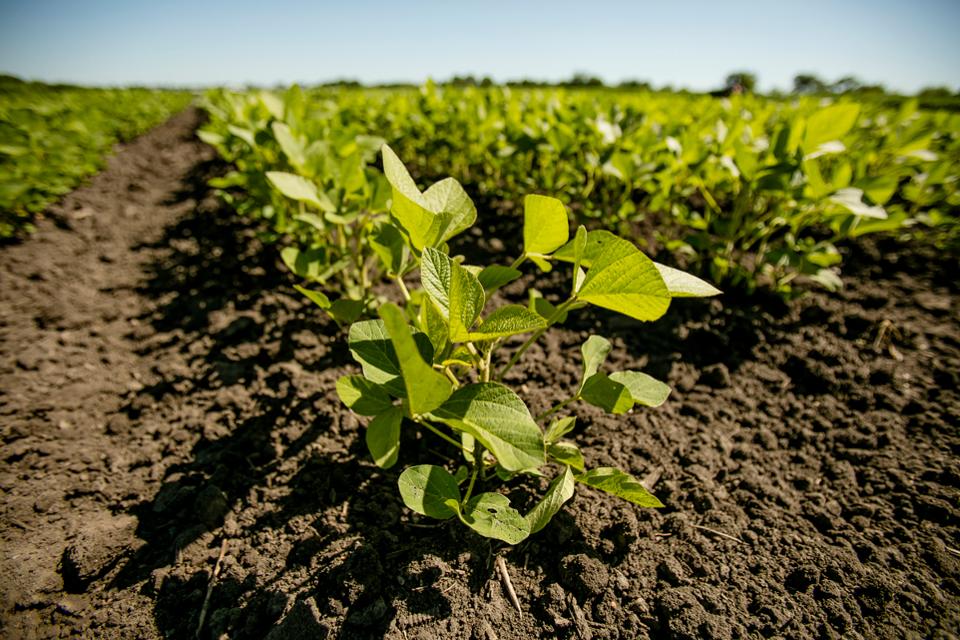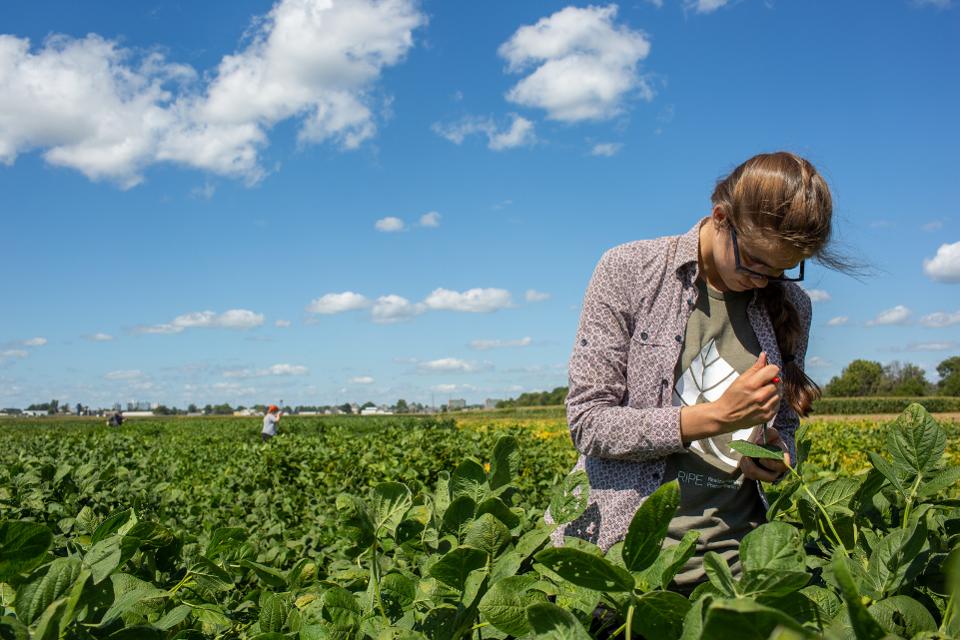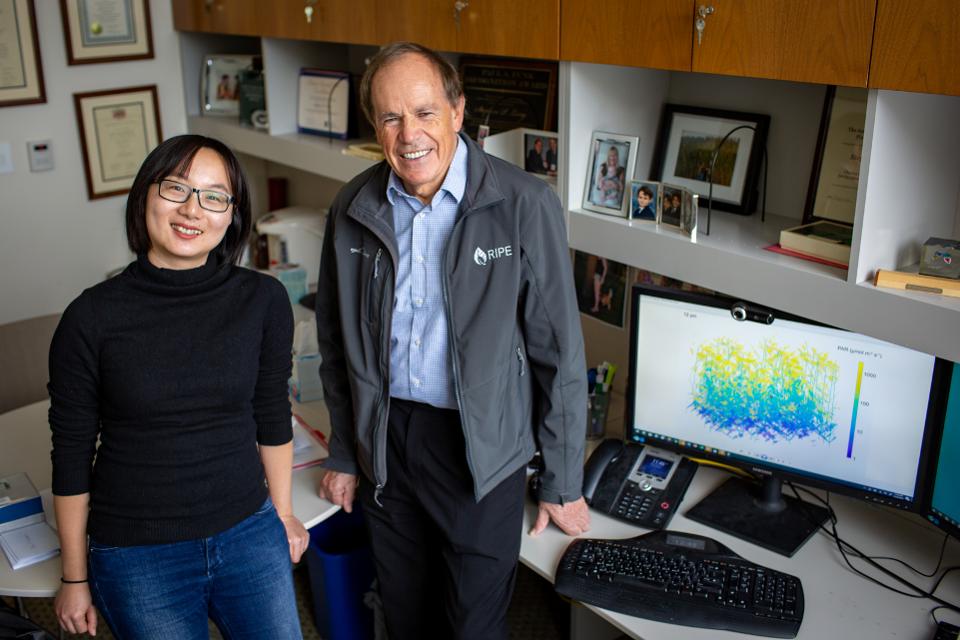Soybeans and other crops are hurting for light, but this research fights shadows

No, this is not about some evil presence darkening the skies and harming soybeans. It’s about finding ways to improve photosynthesis so farmers can grow higher-yielding crops and feed the world’s growing population.
There’s an international research project called RIPE, short for Realizing Increased Photosynthetic Efficiency. The effort, sponsored by big names like the Bill & Melinda Gates Foundation, most recently has developed a new mathematical computer model to understand how much yield is lost as soybeans deal with light fluctuations on cloudy and sunny days.
Soybeans lose as much as 13% of their productivity because they can’t adjust quickly enough to changes in light intensity that are standard in crop fields, says Yu Wang, a postdoctoral researcher at the University of Illinois. Wang led a recent study for RIPE and says the 13% loss is massive, considering that soybeans are the top source of vegetable protein in the world.
“A good Midwest soybean crop might produce one and a half tons of beans per acre, so a 13% loss is about one-fifth of a ton per acre,” Wang explains. “The USA produced about 140 million tons of soybeans in 2018, so (that’s) a loss of about 20 million tons for the whole country.”

Crops like soybeans use sunlight to fix carbon dioxide into food via photosynthesis. But crops like soybeans also have to deal with an ever-changing light environment, as light filters through leaves, creating shifting, dappled “sunflecks,” University of Illinois researchers explain.
For the study, published in a special issue of The Plant Journal, the team created a “dynamic computational ray-tracing model that was able to predict light levels to the millimeter across every leaf for every minute of the day in a flowering soybean crop.”

The model also takes into account two critical factors known as photoprotection and Rubisco activase.
Photoprotection, as its name suggests, protects plants from sun damage. But it can take minutes to hours to stop when light levels drop. Rubisco activase is a helper enzyme, triggered by light, that turns on the protein Rubisco to fix carbon into sugar.
The team used the model to simulate a sunny and cloudy day in Champaign, Illinois. “On the sunny day, long-term photoprotection was the most significant limitation of photosynthesis. On the cloudy day, photosynthesis was the most limited by short-term photoprotection and Rubisco activase ...” according to a news release.
Wang notes that past models of crop production used to forecast current yields and future yields under climate change only examined hour-by-hour changes in light intensity.
“Our model is different in trying to understand what may be limiting yields as a means to identify ways to genetically improve, or bioengineer, better crops.”
Unfortunately, we can’t fix this problem with mirrors.
“Mirrors could only work if they continually tracked the light and we would need millions of these dynamic mirrors per acre, so (that’s) unlikely to be practical anytime soon,” Wang says. “The approach is to genetically engineer, or possibly breed, the photosynthetic apparatus to adjust more rapidly to rapid changes in light level.”
She adds that the problem with light intensity in lower-yielding crops is primarily because farmers are now growing major crops in dense stands where upper leaves shade the others as they move in the wind and as sun angle changes minute by minute. Rising carbon dioxide also has resulted in an increase in the number of leaves that crops such as soybean produce.
These changes affect more than soybeans, Wang says.

To increase productivity, farmers are growing major crops at higher densities, supported by breeding and fertilization. This has increased productivity, but that productivity would be higher if the leaves were able to adapt faster to transient shading caused by other leaves. This would also be true of corn, wheat, rice, cotton, cassava, and cowpea.
The RIPE project has begun to address photoprotection limitations in soybean and other crops including cassava, cowpea and rice. In 2016, the team published a study in the journal Science where they increased protein levels to boost the productivity of a model tobacco crop by 14-20%. The RIPE team from the Lancaster Environment Centre at Lancaster University also is seeking better forms of Rubisco activase in soybean and cowpea.
“We estimate that if we can engineer this faster adjustment to natural light fluctuations, food production could be increased 20% per acre, without a need for more water,” Wang says.
Other sponsors of the RIPE work include the U.S. Foundation for Food and Agriculture Research (FFAR) and the U.K.’s Department for International Development (DFID).